Body condition scoring is used widely as an aid to the management of sheep and cattle. Research shows that horse body condition score (BCS) provides a valuable method of monitoring body condition. Body Condition is the most reliable indicator of the suitability of a horse diet.
What is the ideal body condition score of a horse?
Horse Body Condition scoring is the ideal determiner of the general health of a horse. The Body Condition Scoring (BCS) allows determining the horse’s very thin, poor health, or too fatty. Horse BCS determines a scale of 1-9 based on six prominent locations on the horse body where fat deposits. The location of fat deposition on a horse’s body is:
- Neck.
- Wither region.
- Spinous process.
- Transverse process.
- Behind the shoulder.
- Ribs.
- Tail head.
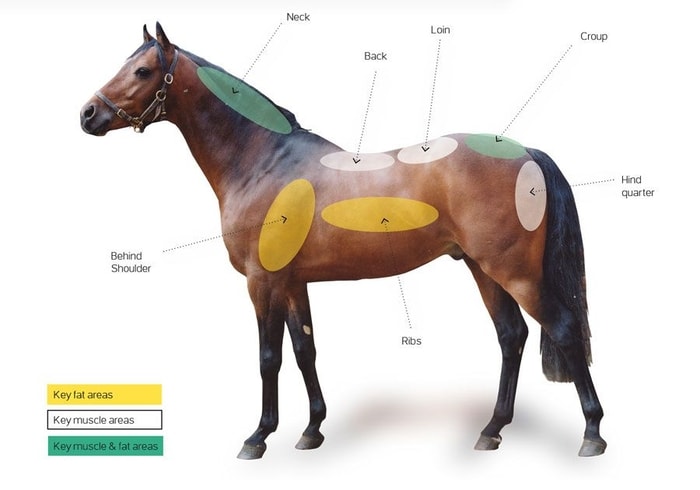
The spinous process is the part of back vertebrae that projects upward, and the transverse process is the part vertebrae that projects outward. BCS is determined by both visual and physical examination (palpation) on the horse body’s specific portion.
Basis of Body Condition Scoring
To estimate your horse’s condition, you should look into the following:
- Assess, visually and by feel, the horse’s pelvic and rump, back and ribs, and neck.
- Give those areas individual scores.
- During the intermediate assessment, you can give half scores.
- Using the rump and pelvic assessment as the base, adjust that score by a half-point if it differs by one or more aspects from the neck or ribs section.
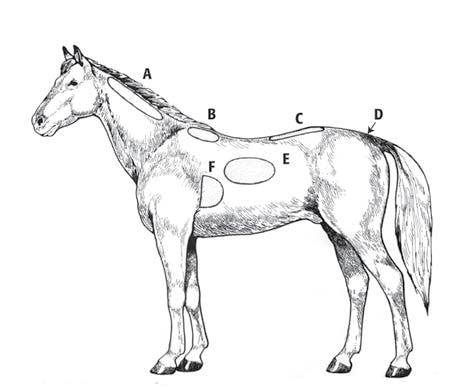
Horse Body Condition Score Determination System
| Score | Categories | Neck | Back and Ribs | Pelvis and Rump |
| 0 | Very Poor | -Marked ewe neck
-Narrow and Slack at Base |
-Skintight over ribs
-Spinous process sharp and easily seen |
-Angular pelvis-skin tight.
-Deep cavity under the tail and either side of croup |
| 1 | Poor | -Ewe neck
-Narrow and slack at base |
-Ribs easily visible.
-Skin sunken on either side of the backbone. -Spinous process well defined. |
-Rump is sunken but skin supple.
-Pelvis and croup well defined. -Deep depression under the tail. |
| 2 | Moderate | -Narrow but firm | -Ribs just visible.
-Backbone well covered. -Spinous process felt. |
-Rump flat on either side of the backbone.
-Croup well defined, some flat. -Slight cavity under the tail. |
| 3 | Good | -No crest.
-Firm neck. |
-Ribs just covered.
-No gutter along the back. -Spinous process covered but can be felt. |
-Covered by fat and rounded.
-No gutter. -Pelvis easily felt. |
| 4 | Fat | -Slight crest. | -Ribs well covered (need firm pressure to feel).
-Gutter along the backbone. |
-Gutter to the root of the tail.
-Pelvis covered by soft fat (felt only by soft pressure) |
| 5 | Very Fat | -Marked Crest.
-Very wide and firm. -Folds of fat |
-Ribs buries (cannot felt).
-Deep gutter. -Back broad and flat. |
-Deep gutter to the root of the tail.
-Skin is distended. -Pelvis buried (cannot feel) |
Brief Description of Horse Body Condition Score
0: Very Poor Horse
- Very sunken rump.
- Deep cavity under the tail.
- Skintight over bones.
- Very prominent backbone and pelvis.
- Marked ewe neck.
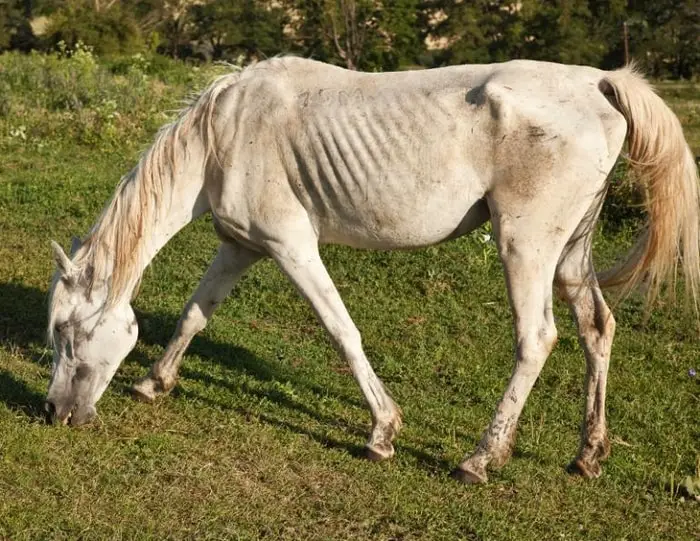
1: Poor Horse
- Sunken rump.
- Cavity under the tail.
- Ribs easily visible.
- Prominent backbone and croup.
- Ewe neck, narrow and slack.
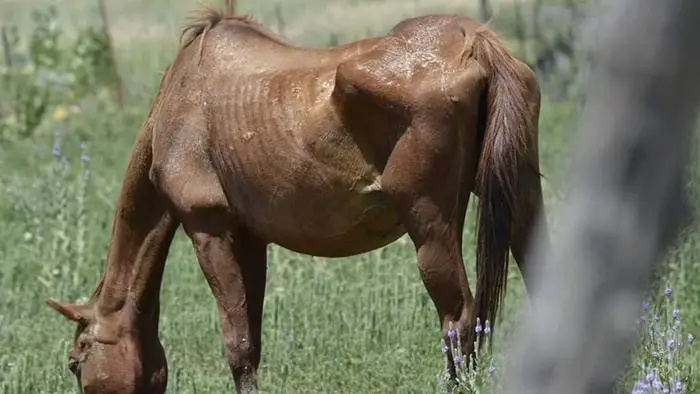
2: Moderate BCS Horse
- Flat rump on either side of the backbone.
- Ribs just visible.
- Narrow but firm neck.
- Backbone well covered.
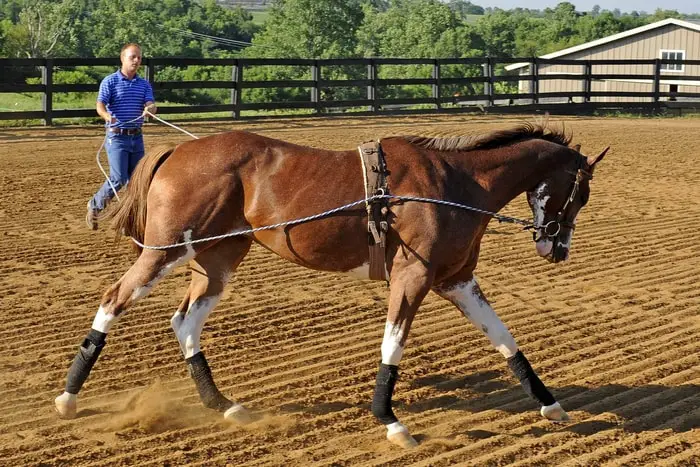
3: Good BCS Horse
- Rounded rump.
- Ribs just covered but easily felt.
- No crest, firm neck.
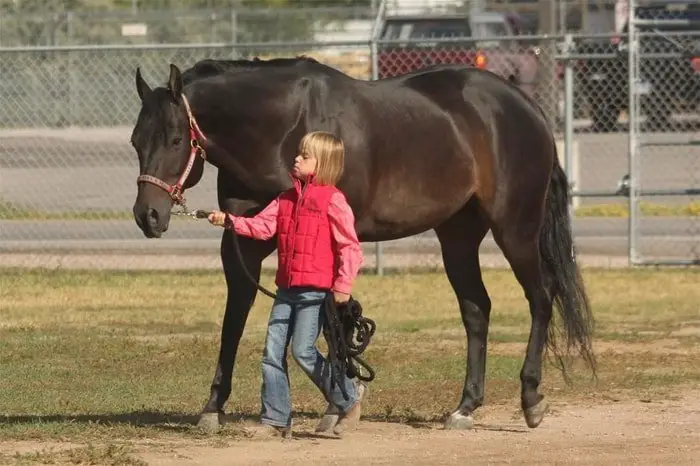
4: Fat Horse as per BCS
- Well rounded rump.
- Gutter along the back.
- Ribs and pelvis hard to feel.
- Slight crest.
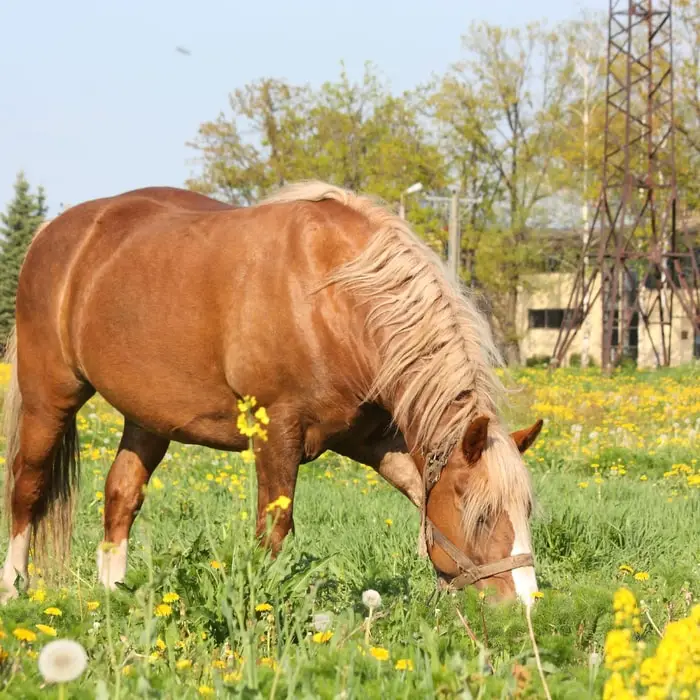
5: Very Fat Horse
- Very bulging rump.
- Deep gutter along the back.
- Ribs buried.
- Marked crest.
- Folds and limps of fat.
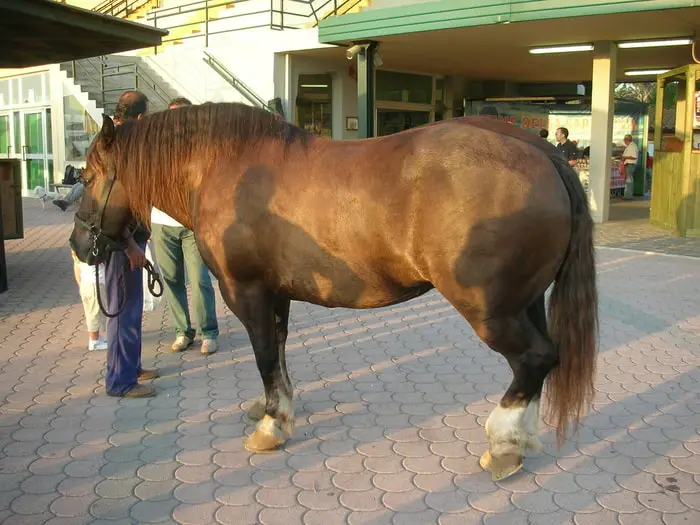
Henneke’s Horse BCS Determination
Texas A&M University developed Henneke’s horse’s body condition scoring system in 1980. The system is universal for all horses to assess the body condition and body fat. The system indicated the score from 1 to 9 scale and gave some indication. The ideal horse’s score ranges from 4-6, the poor health score ranges from 1-3, and the fatty horse’s score ranges from 7-9. A brief description of the scores of the horse are as bellow:
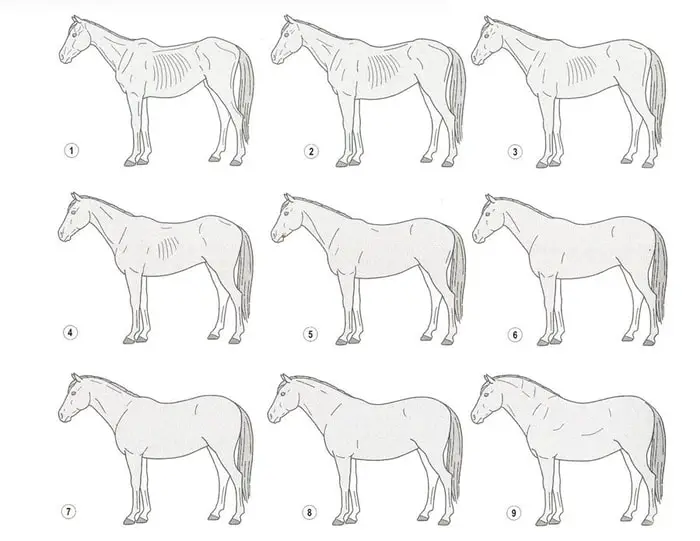
Score 1: Poor Horse
- Extremely emaciated horse.
- No fat deposition in the body.
- The ribs, backbone, vertebrae, tail head, wither, neck, and shoulder are visible.
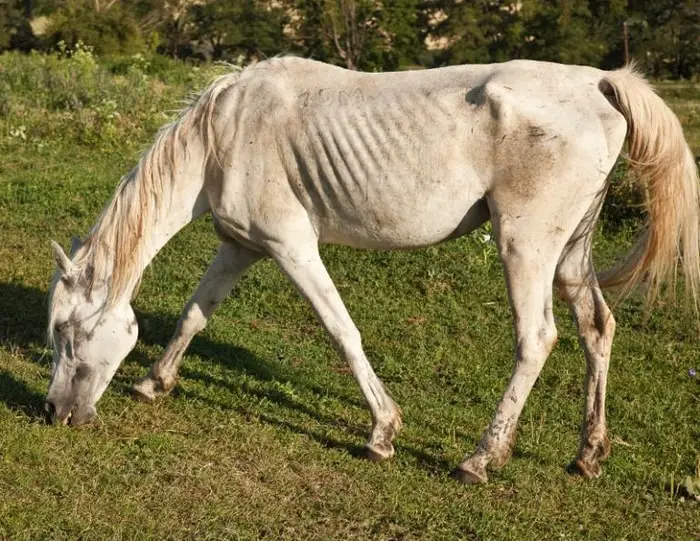
Score 2: Very Thin Horse
- Emaciated horse.
- Slight tissue covers over the bones.
- Vertebrae, neck, ribs, backbone, wither, shoulder, and tail head are visible.
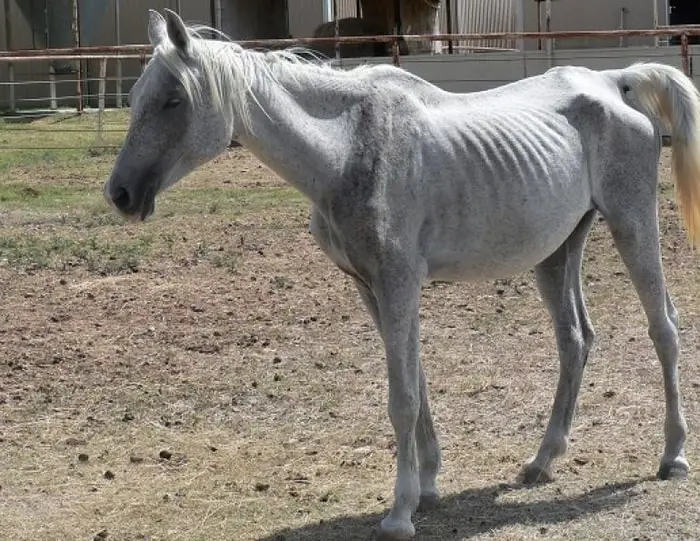
Score 3: Thin Horse
- Slight fat covers over the body.
- Individual ribs or vertebrae are not visible from a long distance.
- The neck, shoulder, wither, and tail head is not so visible.
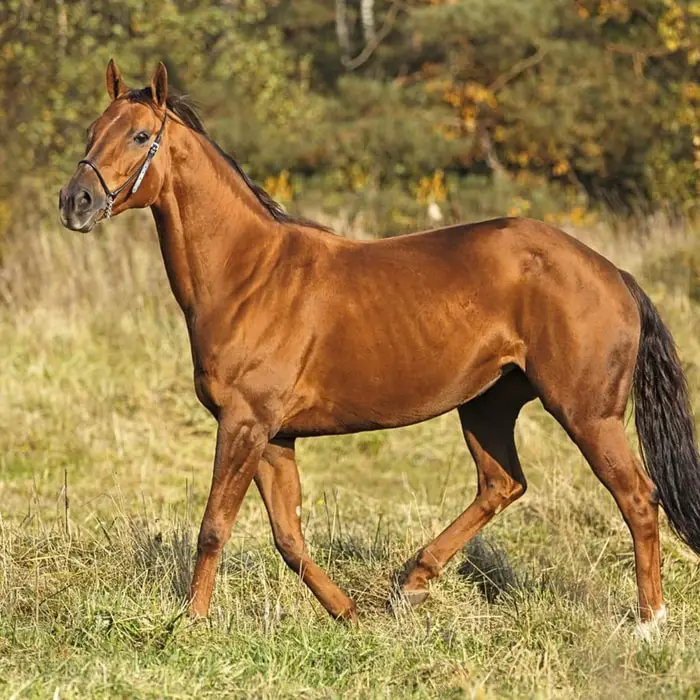
Score 4: Moderately Thin Horse
- Outlines of ribs and ridges of spines are visible.
- Depending on the breed tail head may or may not be visible.
- The neck, shoulder, and withers are not appeared overly thin.
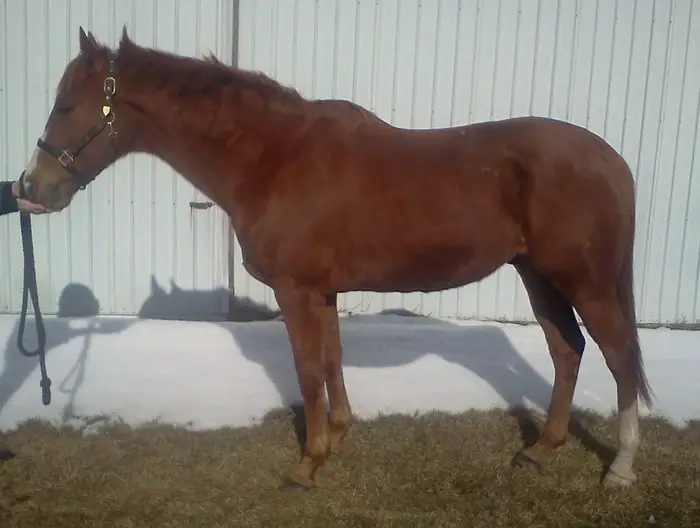
Score 5: Moderate Horse
- Ribs and spines are not visible but feel by palpation.
- The tail head of the horse is spongy.
- The neck, withers, and shoulder are smooth and rounded.
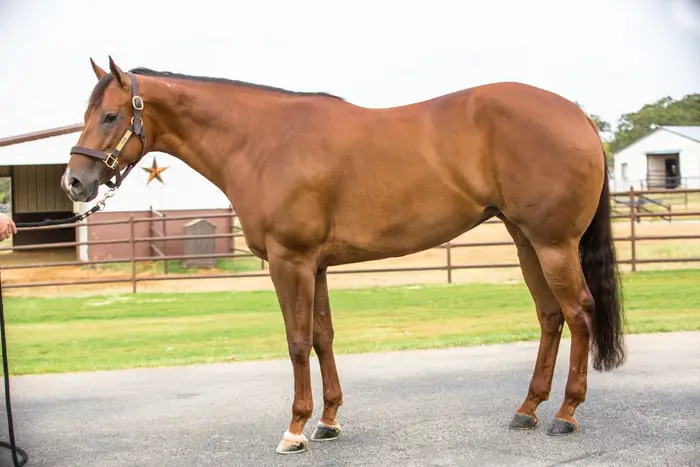
Score 6: Moderately Fleshy Horse
- The tail head of the horse is spongy.
- The neck, shoulder, and withers are rounded and smooth, with slightly fat deposition in this area.
- Spines are slightly creasing down.
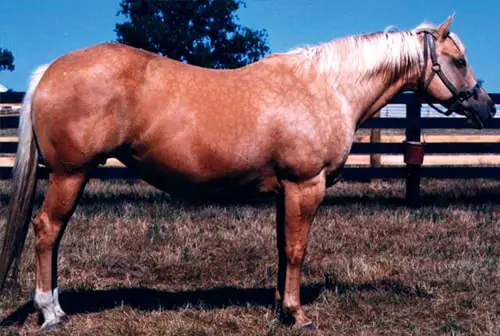
Score 7: Fleshy Horse
- Spine creased down.
- Fat deposition between the ribs.
- Spongy tail head.
- Fat deposition along the withers, shoulder, and neck.
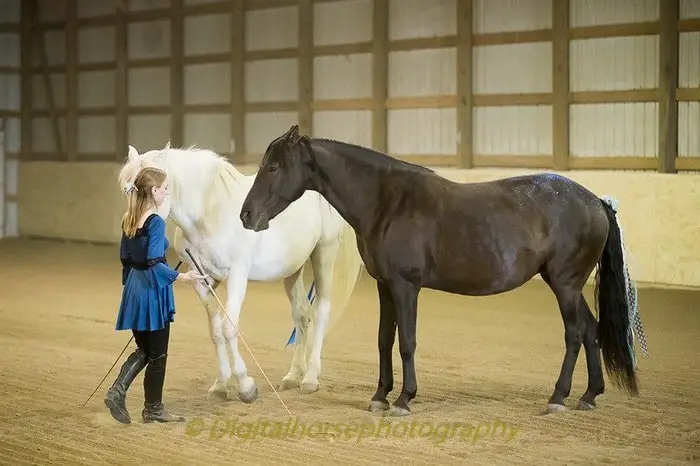
Score 8: Fat Horse
- The spine is creased down.
- Ribs are difficult to feel due to the deposition of fat.
- The tail head is surrounded by soft fat.
- The neck of the horse is large.
- The deposition of fat in the withers, behind the shoulders, and between the thighs.
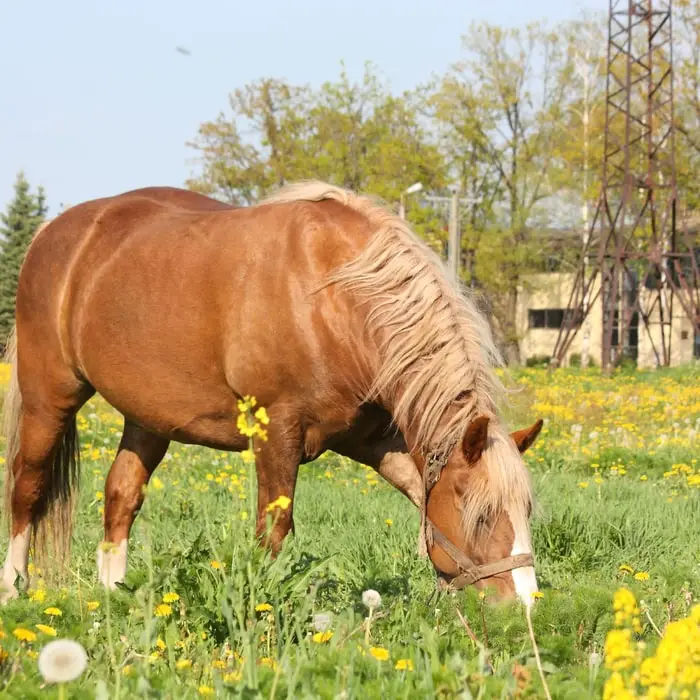
Score 9: Extremely Fat Horse
- Spines are obviously creased down.
- Deposition of patchy fats on ribs.
- Bulging fat deposition on the tail head.
- Fat fills in the flanks and inner thighs.
- Bulging deposition of fat in the neck, shoulders, and withers.
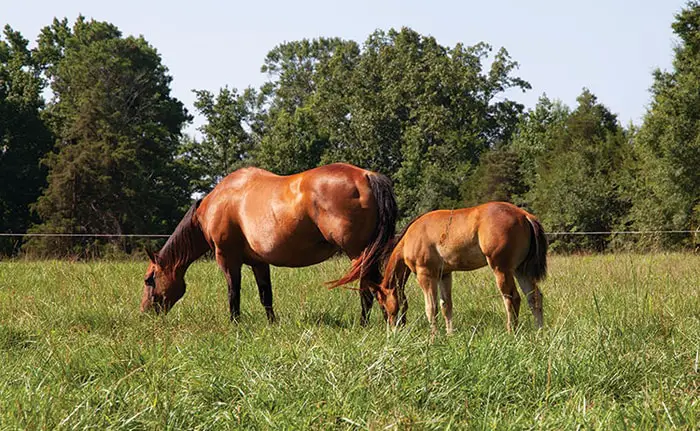
Concluding Remarks on Horse Body Condition Score
There are many implications of knowing the horse body condition scores. The health and management of the horse can be appropriately ensured by this scoring. You can make a proper ration scale, diet chart, and supplements for your horse. After purchasing a horse and at the age of 2 years, you must make your horse’s score based on its body condition. This information will help you in daily management and treatment purposes.